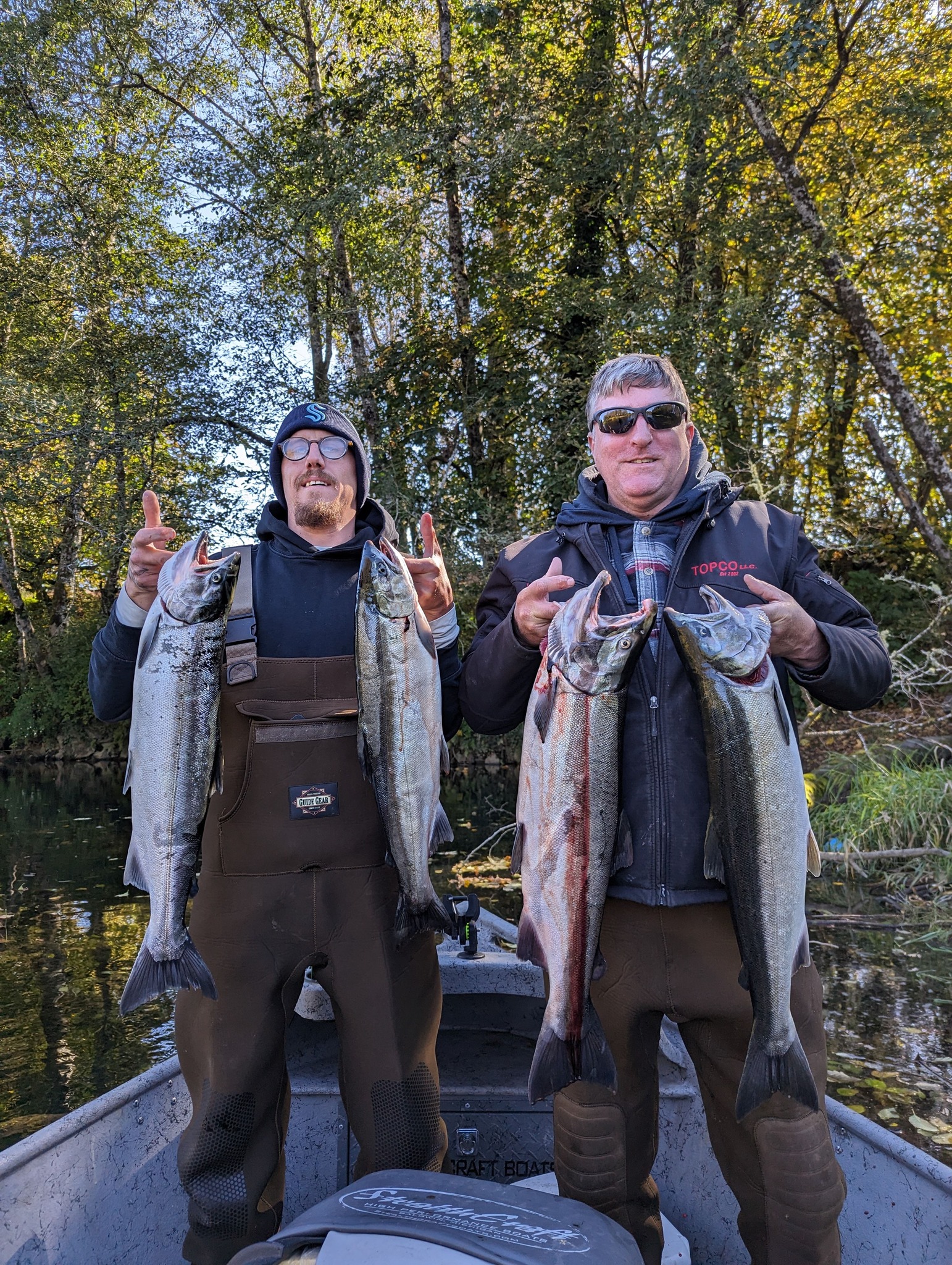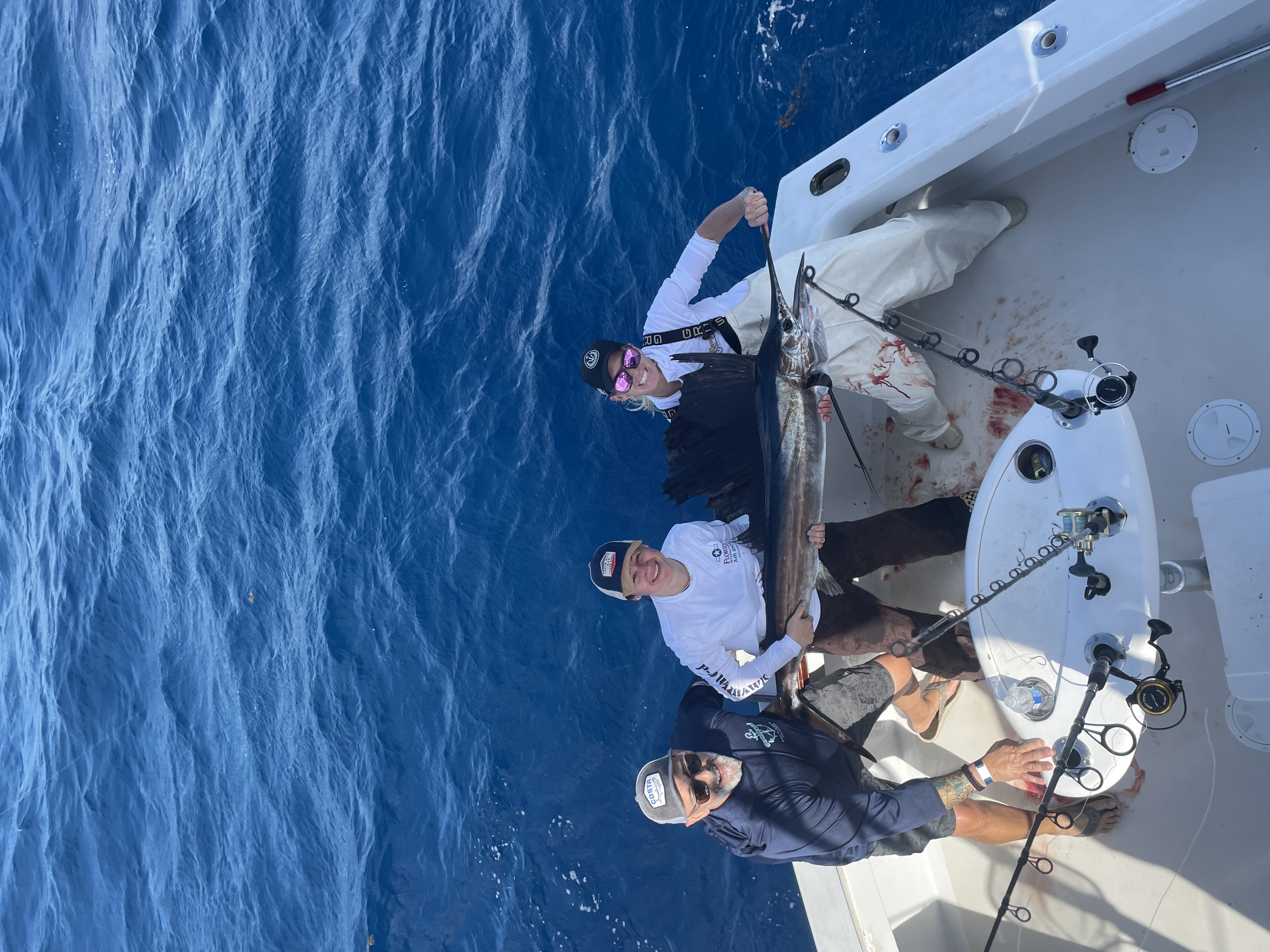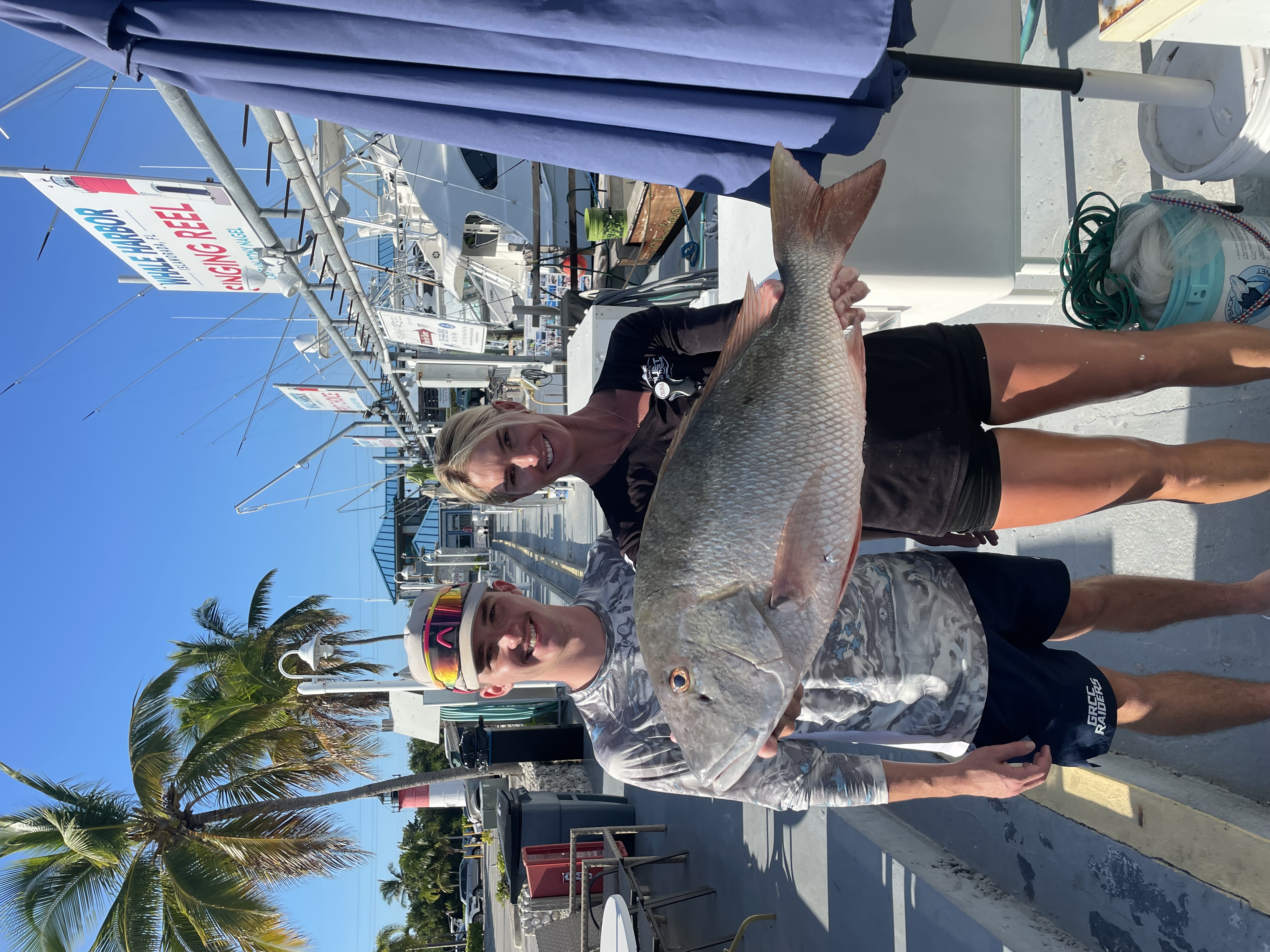Epic Offshore San Diego
Deep Sea, Nearshore Fishing in Puerto Aventuras
Fishing Charter, Puerto Aventuras
Steelhead Fishing Trip
Salmon Fishing Trip
Deep Sea Fishing in Playa Herradura
Full Day Offshore
Inshore, Nearshore Fishing in San Diego
Epic Coastal Or Inshore Fishing
Deep Sea Fishing in Playa del Carmen
Deep Sea Fishing
Inshore, Nearshore Fishing in Gulf Shores
Inshore/Nearshore 3-5 Hours
Deep Sea, Nearshore Fishing in Islamorada
4 Hour Half Day
Offshore San Diego
We started Captain Experiences to make it easy to book fishing and hunting guides around the world. With over 2,000 Damn Good Guides, our platform makes finding and booking a trip seamless. Head here to check out our trips.
Going Fishing
While most of our guides here at Captain Experiences will provide everything you need for a great day on the water, you might be curious to know what they’re bringing so you can be ready for your next solo adventure.
When you’re going fishing, one of the most important things you can do is to get prepared for a successful trip. Below is all the information you’ll need to get out on the water and have a Damn Good Trip.
Fishing Must Haves
It’s hard to have a bad time fishing, but it’s hard to fish at all without having the right angling supplies.
Our guide Chris says it best “We send a very detailed list to our adventurers. I can always tell who reads these and who doesn’t.”
To have the best experience, it’s important to be prepared, here is a list of everything you’ll need.
The Best Fishing Gear
To get started, you’ll need some basic fishing gear. Now of course this list will be different depending on whether you’re doing some fly fishing in the creek, or targeting wahoo in blue water.

No matter what type of fishing you’re doing, or which species you’re hoping to land, this should give you a good idea on how to get started with some of the best fishing gear, along with some advice from our captains.
1. Fishing license and fishing regulations information: First thing’s first, need to make sure you’re legal. Be sure to check out your local regulations and purchase your fishing license. Nothing quite ends a fun fishing day like a bad experience with a game warden. If you don’t know where to start, we have you covered on access to licensing and regulation information by state here.
2. Rods and Reels: Unless you’re going old school and trying to catch some fish by hand, spear, or bow, you’ll need some rods and reels. Now what exactly you’ll need will vary on whether you’re fly fishing, freshwater fishing, or saltwater fishing. If you’re in the salt for example, you’ll have to decide the level of power and action you’ll need to handle, whether you want a spinning rod or baitcaster, if you’ll need a trolling rig, or a jigging rod and reel. Different species, skill levels, and spots will require different rods and reels.
If that all sounds like gibberish, our captains and guides have you covered. “The most important gear we bring is the actual rod and reels rigged up with the best tackle for the booked trip. The captain knowing what to rig up for each specific trip type makes a huge difference in the success for the day” - Captain Mike Short
3. Tackle Box: As Captain Mike said, you’ll need to bring some tackle. Every angler has their own mix of tackle that they rely on, but it’s a standard mix of hooks, sinkers, bobbers or floats, lures, a dehooker, swivels, extra fishing line, and leader material. Different species require different strengths, lengths, and weights of all of the above. The best way to figure out what you’ll need is to get help from a guide, but if you’re going solo be sure to research your target species and what is necessary to catch them.

4. Lures or bait: Included in your tackle box or in your bait well, you need something to get the attention of the fish. Artificial lures include flies, spinners, plugs, spoons and more, all designed to attract them, usually by using movements, vibrations, or colors that replicate their prey. Bait can also be used in the same way. If you’re trying to choose between the two, or what the best of either is to use, it’s good to visit a local bait shop and see what bait they’re offering that’s in season, either to stock up or to find out which artificial option would best mimic them.
5. Pocket knife, pliers, and scissors: To complete your tackle box, you’ll need some tools. There will be lines to cut, lures to adjust, hooks to be sharpened or removed, or a hundred other things that may come up on your trip. Having some tools, or even a multi-tool, comes in handy.
6. Nets and gaffs: Whether you’re in a creek bed or far offshore, you’ll want to have some tools to land your catch both safely for you and the fish. When it comes to catching and releasing, nets are vital which you can read more about here. For those large, trophy fish in the deep, a gaff assists you to get some monsters in the boat.
7. Boat or waders: If you’d like to get off the shore or pier and want to stay dry, waders or a boat will help you. Waders are waterproof bibs or boots that keep you warm and dry while you traverse the waves. Boats are great to get out to areas that you just simply can’t reach from land. Use our guide to find out what would be the best boat for your trip here.
8. Sun protection: Hats, polarized sunglasses, and non-spray sunscreen are essential to enjoy your trip and be able to tell everyone about it the next day without wincing through a sunburn. Sunlight reflects off of the water, and it will sneak up on you when you’re too busy enjoying the action. Polarized sunglasses have an added bonus of being able to see through the water and spot fish for some sight casting.

9. Personal flotation devices: If you’re leaving land, having personal flotation devices is extremely important. Not only are they often a legal requirement when you’re on the boat, but for your own safety having life jackets and other emergency equipment, such as a first aid kit, flares, and more can make a vital difference.
10. Cooler, filet knife, and baggies: If you’re choosing to keep your catch at the end of the trip, to cook for a delicious reward after a hard day’s work, you’ll need some tools. Depending on the type of fish, different tools will be helpful, but clean water and a knife are always needed to do the cleaning. Baggies that have a closable top along with a cooler and some ice will keep the fish fresh until you get home and can store them in the freezer. If you’re using a guide, they’ll be able to clean the fish for you, but be sure to keep at least an empty cooler in the car so you can stock up before you make your way home or to a local restaurant that cooks your catch.
The Extras
Now that we’ve covered all the basics, it’s time to get into all of the fun extras. These are things that won't make or break your trip, but they’re must-haves to make it the best experience possible.
1. Tape measure or scale: Being able to measure and weigh your catch is absolutely necessary if you’re looking to keep your catch, as you need to make sure it is of legal size. However, if you’re just looking to catch and release, it helps to keep track of your personal best, and some accurate bragging rights. Though, when people tell fishing stories, a few inches or pounds are added for every re-telling.
2. Camera: These days, almost everyone has a high quality camera built into their phone, making it an easy thing to pack. Fishing is all about making memories, and having pictures of your day on the water is something to be treasured. Just like the tape measure, it’s also another opportunity to show off your catch to your buddies.

3. Snacks and drinks: When you’re on the water, staying hydrated is vital but often forgotten. Snacks are also important to keep you fueled for an action packed day. Granola bars, crackers, sandwiches, or whatever is your taste can make the difference of coming in early. Of course, a couple cold ones on the boat can add to the relaxation, just be sure not to bring any glass, and have a trash bag for your wrappers, bottles, and cans.
4. Bug Spray: Insects are a quick snack for fish, and you’re a quick snack for them. To avoid spending the entire trip debating on whether or not mosquitos are that important to the ecosystem, spend more time fishing and bring some bug spray.
5. Cash: If you’re going on a guided trip, bringing cash for a tip is customary. Learn more about how much to tip with our guide here. Even if you’re doing your own thing, having spare cash is always a good idea. A quick stop at a bait shop, the gas station, or restaurant on the way home might end up being on the agenda.
What to Wear Fishing
What to wear on a daytrip, what to wear on a fly fishing trip, and what to wear on an offshore trip all have different, but similar answers. What to wear deep sea fishing, especially if you’re planning a multi day trip, will be a little more intensive than simple daytrip clothing. What to wear fly fishing will also vary, not only due to the type of trip, but also depending on the weather. Below are our suggestions on how to be in fashion for any type of trip.
1. Always wear layers. Some of the best times to fish are in the early morning and late afternoon. Starting or ending with a jacket you can rip on and off in a flash is prime to say cozy during your trip. Ripping through the wind on the boat to your fishing spot can also get a little chilly. If you’re on the side of the lake, shedding off a long sleeve on your 20th cast should be able to be quick so you don’t miss the action. Preparation is key and having options is helpful while fighting fish.

2. Non-marking shoes. Whether it’s your own boat, a buddy’s boat, or a guide’s boat, there’s nothing quite as painful as looking down and seeing a bunch of marks from your black soled shoes. When fighting fish, you’ll want something non-slip so you can have a solid plant, and non-marking so you can leave with awesome memories and zero guilt.
3. Extra set of clothes. If you’re going on a multi-day trip, this may be obvious. However, even on a daytrip, it’s nice to have a spare change of clothes to change into after the trip or even on the way back to shore. Chances are when you’re fishing, you’re probably going to get wet or get some seaweed slime on you. Being able to change into a warm, dry, and clean set of clothes can make all the difference for that after trip dinner spot while you talk about your epic day.
4. Staying comfortable. Fishing is both relaxing and exhilarating, but it certainly isn’t an easy hobby. Battling fish is a lot of effort, and being comfortable will save some aggravation. Along with layers, performance shirts and bottoms are perfect to keep your sweat wicked, dry quickly, and allow you to handle all the action. As Captain Bryce puts it “Making sure you are wearing the correct clothes for a day on the water is of utmost importance. Wearing the incorrect clothes can make a very enjoyable day on the water a very uncomfortable day”
5. Dress for the weather. You can find great fishing in almost any season and any weather if you have the drive. Cold, wind, and rain are all something to consider having to fare on the seas, so bringing a windbreaker or rain jacket is always a good idea. For a complete guide on what to wear on a fishing trip depending on the weather and season, check out our advice here.
Hitting the Water

That’s a pretty long checklist, odds are you’ll probably forget to bring something. Not to worry though, as Captain Walter likes to say, the most important thing you can bring is confidence. Staying positive and having a good time is what it’s all about. Whether you’re going on a guided trip and only have to bring yourself, or you’re going on a multi-day solo kayaking adventure these are the necessities to get you started.

January 19, 2021

May 13, 2024

October 26, 2020

July 31, 2024

November 7, 2023
Related Articles
June 15, 2022
January 7, 2022
June 27, 2023
Featured Locations
- Fishing Charters Near Me
- Austin Fishing Guides
- Biloxi Fishing Charters
- Bradenton Fishing Charters
- Cabo San Lucas Fishing Charters
- Cancun Fishing Charters
- Cape Coral Fishing Charters
- Charleston Fishing Charters
- Clearwater Fishing Charters
- Corpus Christi Fishing Charters
- Crystal River Fishing Charters
- Dauphin Island Fishing Charters
- Daytona Beach Fishing Charters
- Destin Fishing Charters
- Fort Lauderdale Fishing Charters
- Fort Myers Fishing Charters
- Fort Walton Beach Fishing Charters
- Galveston Fishing Charters
- Gulf Shores Fishing Charters
- Hatteras Fishing Charters
- Hilton Head Fishing Charters
- Islamorada Fishing Charters
- Jacksonville Fishing Charters
- Jupiter Fishing Charters
- Key Largo Fishing Charters
- Key West Fishing Charters
- Kona Fishing Charters
- Lakeside Marblehead Fishing Charters
- Marathon Fishing Charters
- Marco Island Fishing Charters
- Miami Fishing Charters
- Montauk Fishing Charters
- Morehead City Fishing Charters
- Naples Fishing Charters
- New Orleans Fishing Charters
- New Smyrna Beach Fishing Charters
- Ocean City Fishing Charters
- Orange Beach Fishing Charters
- Panama City Beach Fishing Charters
- Pensacola Fishing Charters
- Pompano Beach Fishing Charters
- Port Aransas Fishing Charters
- Port Orange Fishing Charters
- Rockport Fishing Charters
- San Diego Fishing Charters
- San Juan Fishing Charters
- Sarasota Fishing Charters
- South Padre Island Fishing Charters
- St. Augustine Fishing Charters
- St. Petersburg Fishing Charters
- Tampa Fishing Charters
- Tarpon Springs Fishing Charters
- Venice Fishing Charters
- Virginia Beach Fishing Charters
- West Palm Beach Fishing Charters
- Wilmington Fishing Charters
- Wrightsville Beach Fishing Charters


































